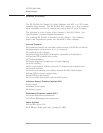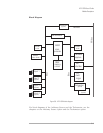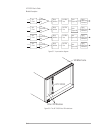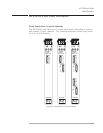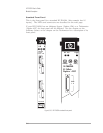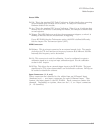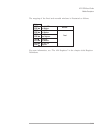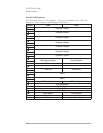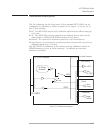
The HP E1432A VXI Device
Address Space
The VXI system architecture defines two types of address space. A16 space
consists of 64 KBytes and A24 consists of 16 MBytes.
The HP E1432A has a 32-bit port through which it has access to the A16
and A24 space. It can also use D32 to send and receive data though the
port. Or it can use the port for 16-bit data transfers by using only 16 of
the 32 bits available. The HP E1432A performs a different type of VME
cycle depending on the number of bits transferred per cycle (two cycles for
16-bit transfers and one cycle for 32-bit).
Shared Memory
Shared memory provides a way for the HP E1432A to transfer data to a
controller. The shared memory in the HP E1432A is mapped to the A24
VXI address space. The controller can then access that same address space
to receive or write data. You can call a function to get the data. See the
chapter on “The Host Interface Library.”
Memory Map
The following discussion of memory mapping is included for your
information. You do not need it to operate the HP E1432A because this
functionality is hidden when using the HP E1432A Host Interface Library
software.
Refer to the HP E1432A block diagram (figure 5-1). The VXI interface
maps some of the HP E1432A’s B-bus internal memory space so that it is
visible to the VXI Bus. The port connecting the A and B busses also allows
the VXI Bus access to the SRAM, DRAM, and inputs which are on the A
bus. (SRAM stands for Static RAM; DRAM is Dynamic RAM.)
The VXI interface has two “windows” on the B bus memory space. Each is
512 K-bytes, which is 128 32-bit words. One of the windows is fixed and
the other is movable. The movable window allows the VXI Bus access to
many different parts of the memory space. The fixed window contains:
q The A16 registers
q The B-bus SRAM
q The hardware registers
q The FIFO (which is in DRAM)
HP E1432A User's Guide
Module Description
5-10



